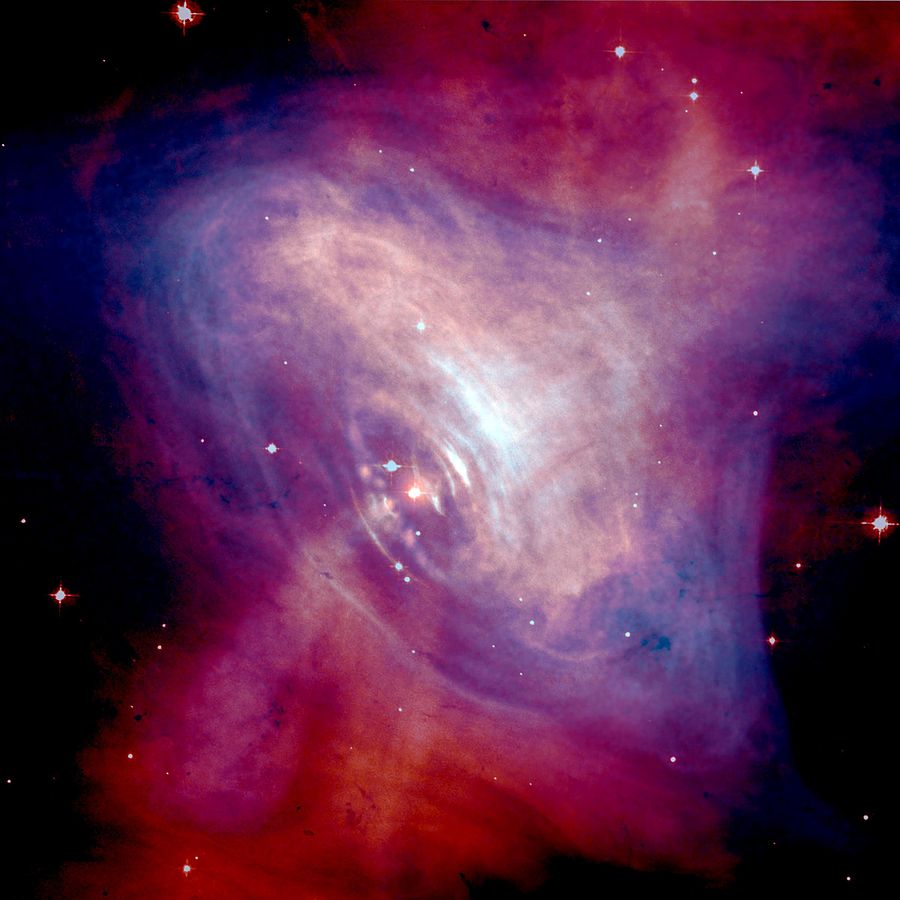 Composite optical/X-ray image of the Crab Nebula, showing synchrotron emission in the surrounding pulsar wind nebula, powered by injection of magnetic fields and particles from the central pulsar.
Composite optical/X-ray image of the Crab Nebula, showing synchrotron emission in the surrounding pulsar wind nebula, powered by injection of magnetic fields and particles from the central pulsar.
Giant Radio Pulsars (GRPs) consist of sporadic and short-lived radiation, during which time the radio flux density becomes 2-3 orders of magnitudes brighter than the regular, average flux density. So far, this phenomenon has been discovered in ~14 radio pulsars. Observations of GRPs are imperative for further understanding the pulsar radiation mechanism. Now, astrophysicists used observations from the Hitomi satellite to uncover the origin of these fast radio bursts.
The X-ray satellite Hitomi was launched on February 17, 2016 to observe with unprecedented accuracy the physical mechanisms produced by high-energy phenomena. Unfortunately, the satellite lost communication with Earth a couple of months later due to a basic engineering error. On March 25, though, just before the satellite loss, astronomers observed the Crab pulsar, one of the most intensively studied pulsars since the discovery of GRPs.
The observations were made simultaneously with the Kashima radio telescope, since the pulsed energy spectrum of the Crab pulsar covers a wide range, from the radio to high-energy radiation at optical, X-rays and gamma-rays. Their analysis indicates that the GRPs originate from a local place within the magnetosphere. However, the data obtained do not allow for strong conclusions to be drawn. Future X-ray missions, such as the recently launched NICER mission may be able to reveal the nature of Giant Radio Pulsars.
Publication: Hitomi Collaboration
